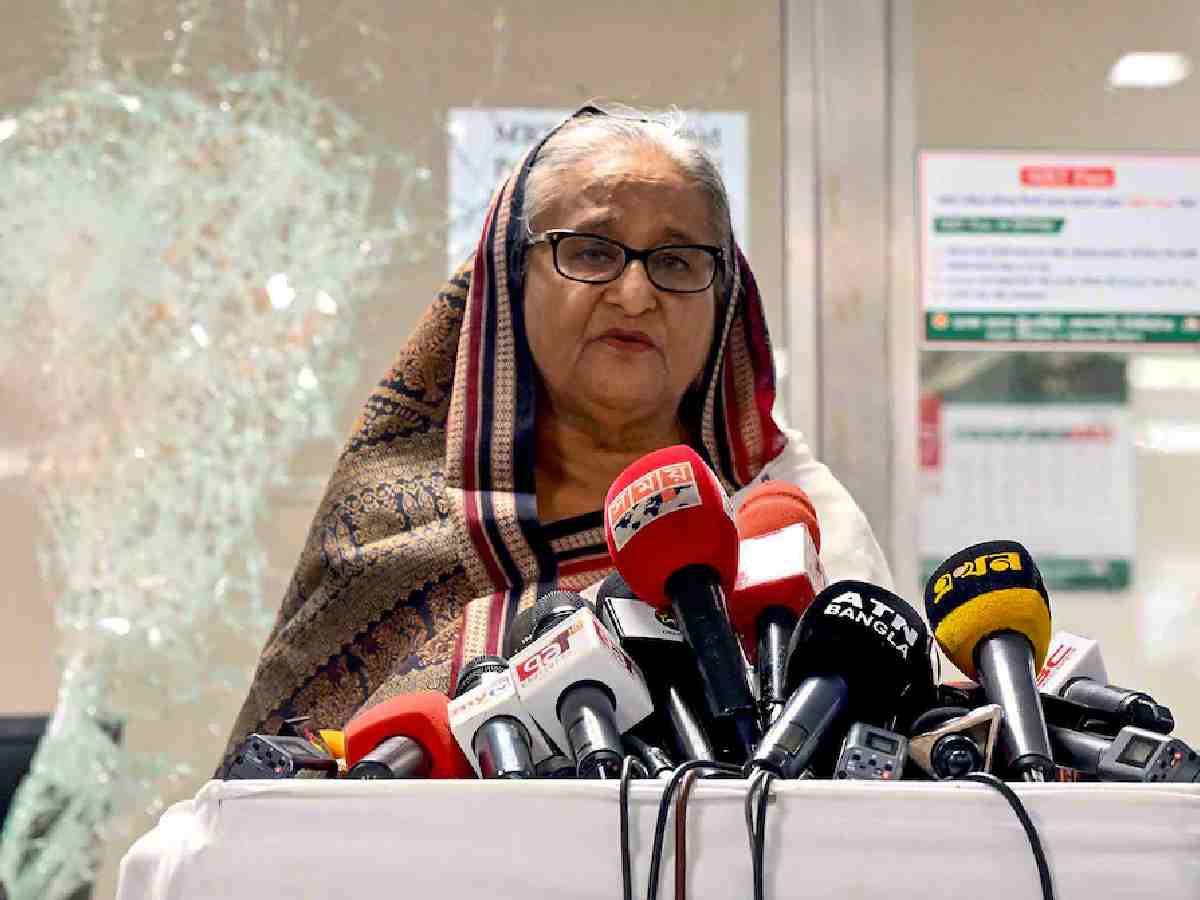Sheikh Hasina: After resigning as the Prime Minister of Bangladesh on Monday, Sheikh Hasina landed at Hindon Airbase a few hours later. There are now reports that the Indian government might offer her political asylum. For Sheikh Hasina, Delhi is like a second home, where she lived an exile’s life for six years.
The refuge called India
Sheikh Hasina fled to Delhi in 1975 and stayed here till 1981, following the murder of her family members, including her father and the first President of Bangladesh, Sheikh Mujibur Rehman, mother, three brothers on August 15, 1975, at their residence in Dhanmondi, Dhaka.
She was in Germany with her husband Dr. Abdul Wazed, a nuclear scientist, and their children during that horrific massacre, which is how they survived.
Also read: Delhi: Red Fort gets a facelift ahead of Independence Day
However, Hasina is not the only international leader who has sought refuge in Delhi during difficult times. Dalai Lama, the spiritual leader of Tibet, as well as the family of former Afghan President Mohammad Najibullah also lived in the Capital in political asylum. Dalai Lama stayed at the Hyderabad House for a few months in 1959, while Najibullah’s family stayed at 5, Kamraj Marg in the early 1990s.
At Pandara Park, Hasina lived in a government flat with her husband and two children. Former President Pranab Mukherjee and his wife Shubhra Mukherjee were her trusted friends during that difficult time. Hasina and Shubhra Mukherjee eventually became very close.
Hasina often visited Pranab Mukherjee’s house on Talakatora Road with her family. The children of both families became close too.
“Sheikh Hasina also started working for All India Radio’s Bangla service to pass the time,” recalls Manmohan Sharma, a veteran journalist.
“Sheikh Hasina also lived at 56, Lajpat Nagar- 3 for a few weeks before moving to Pandara Road. The Bangladesh High Commission operated from there for many years. Now, the High Commission is in Chanakyapuri,” says Anil Makhijani, a real estate consultant and long-time resident of Lajpat Nagar.
Who gave her asylum?
The massacre of her family had devastated Hasina. Then Prime Minister Indira Gandhi decided to grant her political asylum in India. After the assassination, there was no question of Sheikh Hasina returning to Bangladesh.
Leaders of the Awami League would regularly visit Sheikh Hasina in Delhi, encouraging her to be active in her country’s politics. After much deliberation, she decided to enter Bangladesh’s politics and returned to her homeland in 1981.
However, her relationship with the Mukherjee family remained strong. Whenever she visited Delhi, she made sure to spend time with Shubhra and Pranab Mukherjee. Shubhra was a teacher at Lady Irwin School in the Capital. Sharmistha Mukherjee, the daughter of Pranab Kumar Mukherjee, once said, “My mother (Shubhra Mukherjee) and Sheikh Hasina used to discuss art, music, and Bengali literature. When my mother passed away on August 18, 2015, Sheikh Hasina came with her daughter Putul to express her condolences to my family. Putul and I used to play with dolls together at India Gate.”
Also read: Why Bangladesh’s Sheikh Hasina fled to Delhi twice in 50 years
Even as she continues to stay in Delhi, Sheikh Hasina will not be able to meet her friends Shubhra Mukherjee and former President of India Pranab Kumar Mukherjee, both of who have passed away.
However, Hasina could get a glimpse of a road known as Park Street until 2017, near Ram Manohar Lohia Hospital, which is named after her father Sheikh Mujibur Rahman.
Rahman was a central figure in the Bangladesh liberation movement. He visited Delhi on January 10, 1972, and received a grand welcome at the Palam airport. It was bitterly cold in the Capital that day, and he thanked India for its support for his country’s Independence. Prime Minister Indira Gandhi and her entire cabinet welcomed him at the airport. The national anthems of both countries were played, and thousands of Delhiites greeted him along the route from the airport to Rashtrapati Bhavan.





